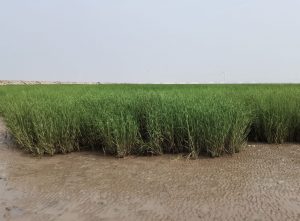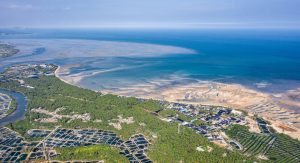When we think of forests, we mostly think of tree-filled landscapes. But the ocean also holds emerald stands of trees so vast, they line one-quarter of our coastlines. “The area is probably equivalent to about the size of the Amazon rainforest, if you add it all up,” says Karen Filbee-Dexter, a marine ecologist doing a research fellowship at the University of Western Australia. These are kelp forests – one of Earth’s most beneficial ecosystems.
Kelps are a type of seaweed, or macroalgae, made up of roughly 33 genera and 112 species — though there remains some disagreement over what constitutes a kelp. What makes them unique amongst other seaweeds is mainly their large size – giant kelp (from the genus Macrocystis and the biggest of the kelps) can reach heights of 45 metres. They tend to grow in cooler waters, where they create lush habitats rich in biodiversity. As ecosystems, they are as important as coral reefs and mangrove forests to the overall health of the ocean. And as Filbee-Dexter points out, it’s also “really important to understand the benefits that these ecosystems provide to humans”.
As a nursery and refuge for many marine animals, they support our fisheries. They store carbon in their photosynthesising fronds, and their wave-buffering bodies are the surest defence some coastlines have against violent storms. They also clean up our waste: kelps can rapidly absorb nutrient pollution caused by fertilisers running off from farmland into the sea. They use it to fuel their own growth and this averts the development of algal blooms which are so harmful to other marine life. In addition to all this, kelps have immense cultural value for many coastal communities.
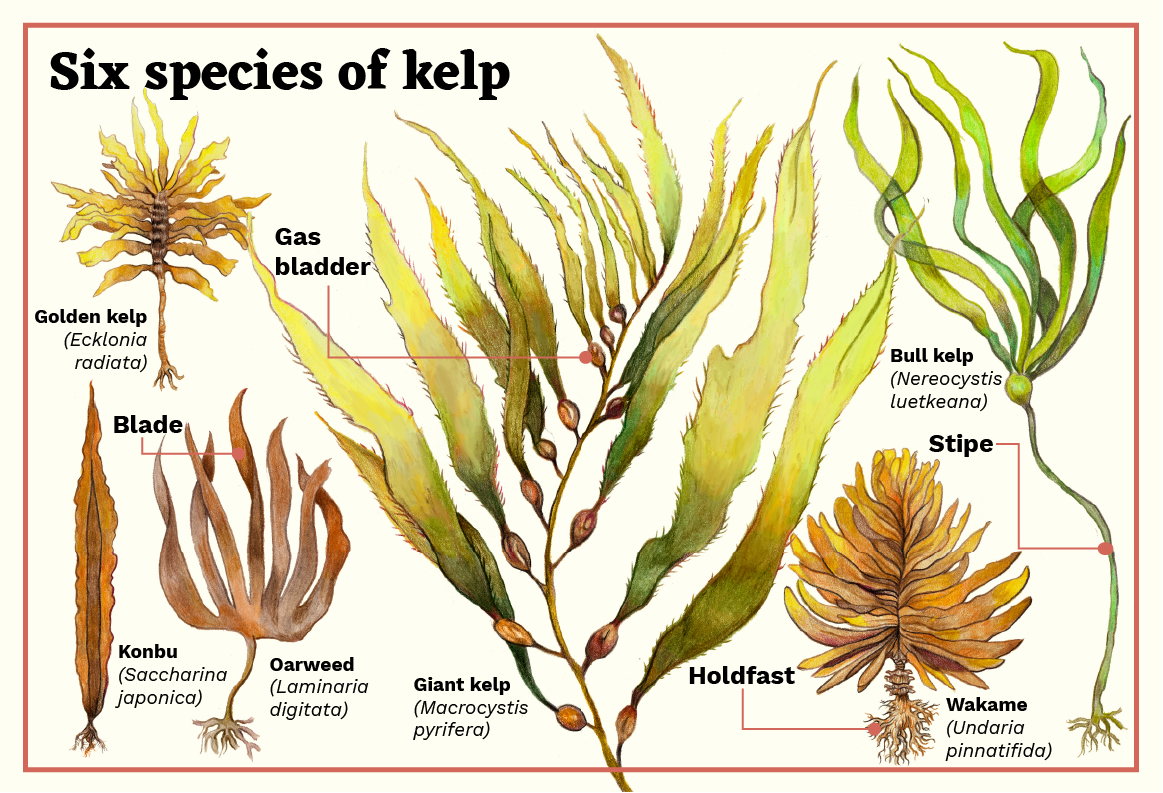
But the world is losing kelp at an unprecedented rate. Water pollution, off-kilter predator–prey dynamics and the warming waters brought by climate change are driving marine deforestation and eradicating some kelp forests altogether. Meanwhile, just a fraction of these forests is protected. In the northeast Pacific Ocean, where some of Earth’s largest kelp populations occur, only 4% of the area covered by giant kelp falls inside marine protected areas.
Now though, an increasing number of researchers, conservation organisations and governments believe we need to better protect and restore our ocean’s once-mighty oases of kelp. Otherwise, we risk losing a significant carbon store, and a foundation of food security – a loss that many compare to the deforestation of the Amazon.
Ignored for too long
Part of the reason kelp forests have not received the attention they deserve is that more “charismatic” marine ecosystems, like coral reefs, have become synonymous with ocean biodiversity, and thus the focus of conservation, says Filbee-Dexter, who studies how climate change affects kelp populations in Norway, Australia and the Canadian Arctic. She explains that, with rising temperatures, expanding layers of warm water are beginning to develop at the ocean’s surface. This is a problem, because warmer water contains less oxygen, and it’s also more buoyant than the nutrient-rich cold waters below – as the warm layers thicken, there is less mixing of oxygen and nutrients between deeper layers and the surface, where these ingredients are needed to fuel the growth of kelps, as well as other marine organisms. Warming may also be contributing to kelp bleaching, which disrupts their ability to photosynthesise. At points along the coasts of mainland Australia and Tasmania, Mexico, the United States and other countries, marine heatwaves and other anthropogenic impacts like pollution have already permanently wiped out whole forests.
Despite this, kelp forests have been left off the priority list for the UN Decade on Ecosystem Restoration, which began in January 2021. “In the oceans [section of the Decade’s website], they talk about coral reefs and mangroves. But there’s not a single mention of kelp, despite it being one of the largest coastal ecosystems,” Filbee-Dexter says.
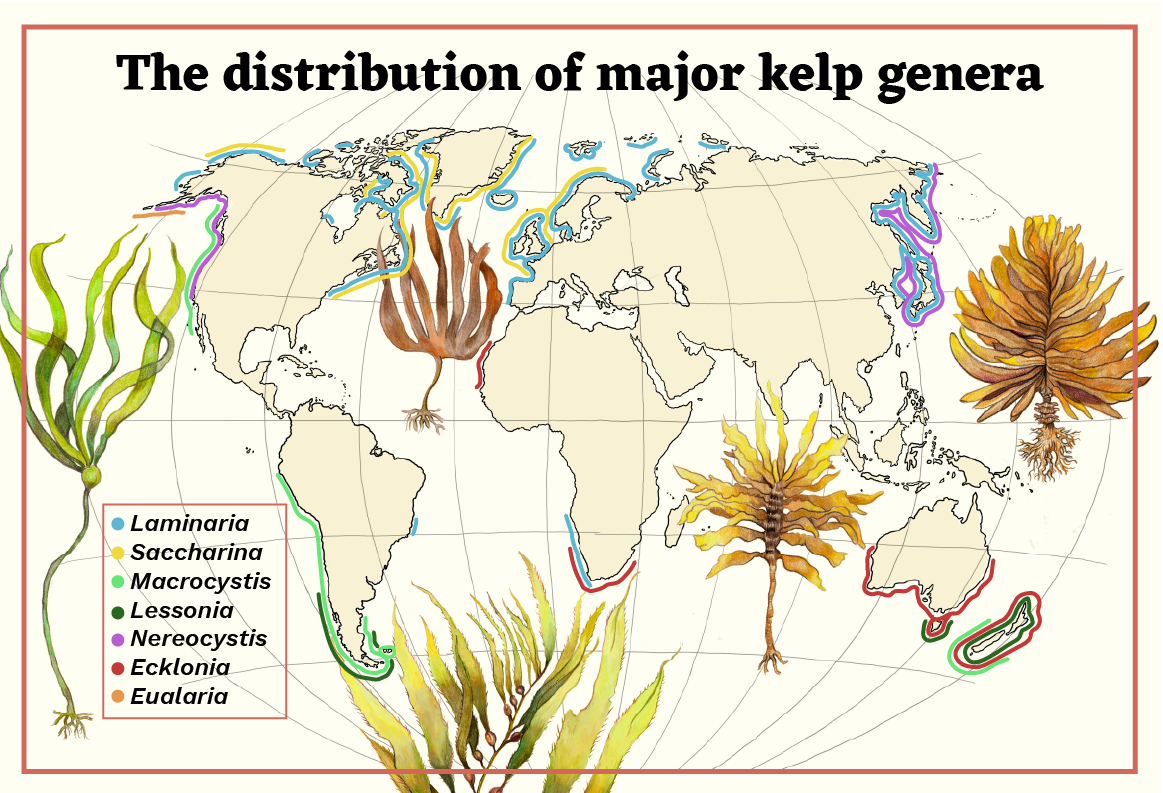
Another reason kelps have been ignored is perhaps the historic lack of research into the ecosystem services they provide. Scientists know they can sequester huge amounts of carbon thanks to their large biomass and high productivity – giant kelp can grow 45cm a day. It’s been estimated that wild seaweeds (of all sorts, not just kelp) sequester about 173 million metric tonnes of carbon each year when they die and get buried in sediment on the ocean floor. But definitive calculations are difficult to make, because wild seaweed is always on the move. When kelp dies or is torn off the rocks by storms, it breaks loose, carrying its carbon store out to sea. Without knowing where all this loose kelp ultimately goes (it could end up rotting on a beach and discharging its carbon, or be buried forever in the deep sea), it’s difficult to calculate the carbon locked away by an individual forest.
The benefits of farming seaweed
Seaweed farms offer a more stable environment for researchers. In China, as well as Japan and Korea, seaweed aquaculture has been practised for centuries. There are thousands of farms along China’s long coastline, where seaweed is grown for food, and for use in pharmaceuticals and biofuels. “We have seven types of cultivated seaweeds in China, but kelp is the major one with the highest yield. It accounts for two-thirds of all China’s seaweed yield,” says Jiaping Wu, a professor of marine science at China’s Zhejiang University.
Wu is interested in how seaweeds’ ecological and commercial value combine in this farming context. His research shows that farmed seaweeds can significantly offset agricultural pollution, removing phosphates and nitrogen that spill into coastal waters and fuel mass algal blooms. Such blooms strip oxygen from the water and create dead zones devoid of marine life. In another study, Wu calculated that at their current growth rate, China’s seaweed farms would remove 100% of phosphorus pollution from the country’s coastal waters by 2026. “Seaweed is a perfect solution to marine eutrophication,” he says.
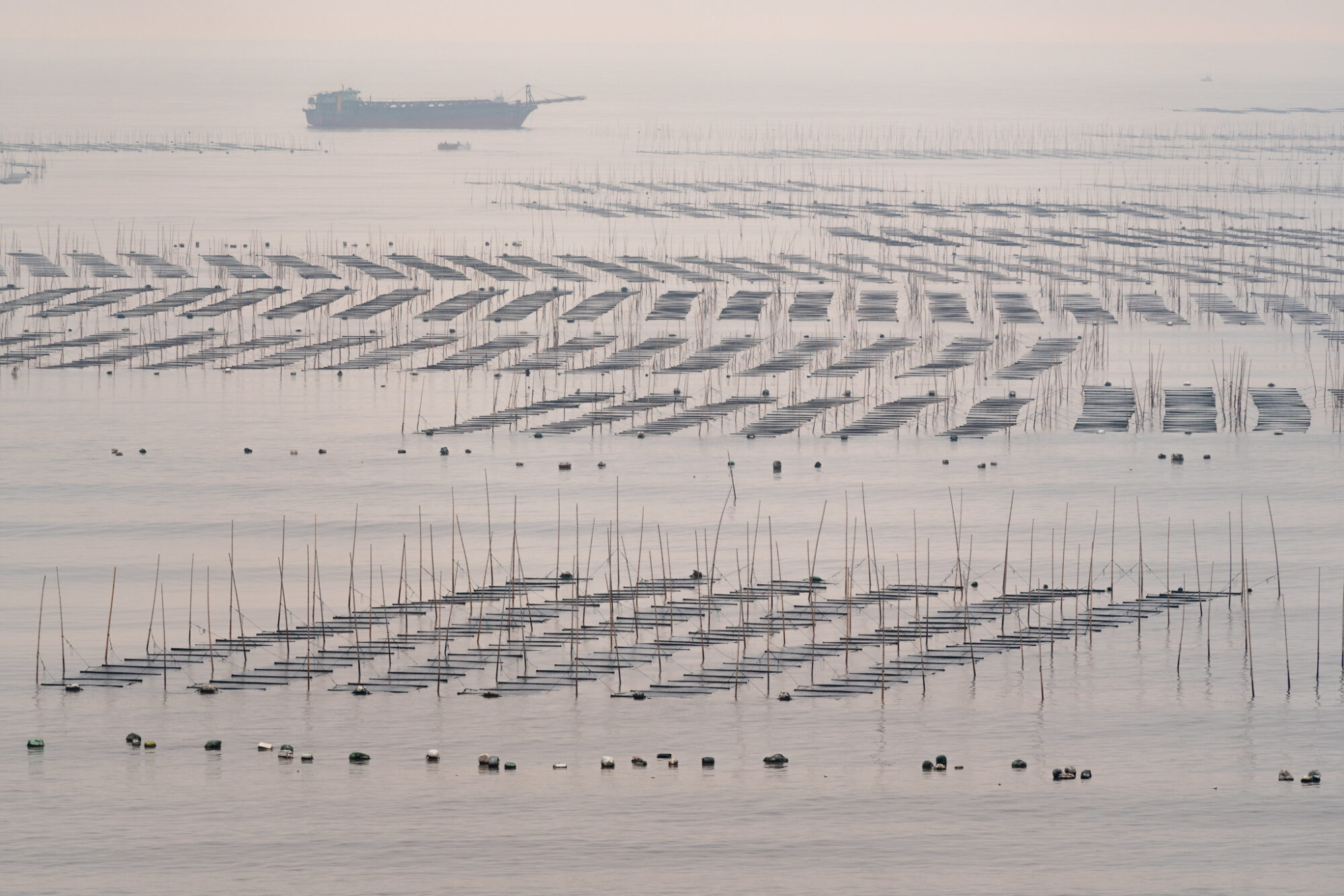
Research is also ongoing to show the role seaweed farms could play in mitigating climate change. An organisation called Oceans 2050, which Wu is part of, is leading an effort to definitively calculate how much carbon farmed seaweed locks in, based on a survey of 23 farms around the world.
When the unharvested parts of farmed seaweed die, they fall to the bottom directly below the farms, locking their carbon in the sediments in an easy to measure way.
“The farmer, by controlling the location of the farm, can control where the carbon ends up,” explains Carlos Duarte, distinguished professor of marine science at the King Abdullah University of Science and Technology, author of several papers on the carbon-storing potential of macroalgae and principal investigator of the Seaweed Project at Oceans 2050.
Farming could gain recognition for seaweeds in programmes like the UN Blue Carbon Initiative. This organisation raises awareness about the carbon-trapping potential of mangroves, seagrasses and salt marshes, but has historically excluded seaweeds because of their unpredictability in the wild.
Eventually, the goal is to incorporate seaweed farms into carbon accreditation schemes, because seaweed farming is “scalable and accountable”, Duarte says. “I think Oceans 2050 is going to deliver the first robust science to underpin the inclusion of seaweed farming in blue carbon.” Duarte adds that seaweed aquaculture also provides jobs, as well as social mobility for women, who make up the majority of seaweed farmers worldwide.
Optimism for wild seaweed
Filbee-Dexter believes that the growing interest in farmed seaweed “is also translating to [wild] seaweed forests”. This is important, she says, because the enthusiasm for seaweed aquaculture shouldn’t override the importance of protecting and restoring natural ecosystems, especially kelps.
Wild kelp forests are worth more than the carbon they lock away. This has become increasingly evident in Tasmania, where 95% of the giant kelp that used to line its shores has been wiped out by warming waters, taking with them the rich fish stocks upon which local fishers had long relied. But for the past two years, Cayne Layton and Craig Johnson – marine ecologists at the University of Tasmania – have been trying to revive these once-great forests by breeding some of the giant kelp that still remain after decades of ocean warming in the region.
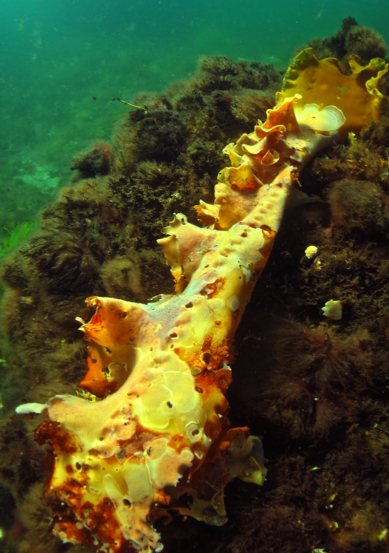
Believing these strains might be more resilient to warming seas, Layton and Johnson began in 2019 by culturing samples of reproductive tissues from the remaining kelp stands, from which they bred baby kelp. In 2020, they planted these “saplings” out in the wild on 100-metre-squared plots off Tasmania’s coast. Out of three test sites, two grew successfully. Now, ten months on, the duo’s hypothesis has proven correct: several hundred resilient kelps are thriving on those plots, Layton says. “Perhaps most encouraging was that despite our warmer than average La Niña summer, our ‘super kelp’ seemed to withstand the warm temperatures, and looked healthy and had nice dark pigmentation, with no bleaching or necrosis,” he says. “This was in contrast to the natural giant kelp, which was shabby, bleached and pretty unhappy.”
Although seaweed breeding has a long history in countries such as Japan, Layton thinks this may be the first time kelps have been bred explicitly to withstand climate change. The discovery could aid other restoration projects, and possibly provide a solution for kelp farms that struggle with climate-related declines in the future. “We’ve demonstrated the potential to use selective breeding to ‘future-proof’ restoration efforts,” Layton says.
Conservation and protection
But climate change isn’t the only threat kelps are facing. Many forests are under attack from kelp-eating sea urchins, which have thrived with the decline of their natural predators, like sea otters. Along the southern coast of California, a local NGO called the Bay Foundation has taken a simple but highly effective approach to tackle this threat: they’ve partnered with fishers who cull the urchins by hand, and have managed to restore 23 hectares of forest to its former glory. This simple approach has also brought back hectares of kelp forest around Japan’s Hokkaido island, thanks to voluntary divers schemes, while the reintroduction of sea otters in Norway has helped kelps regain a foothold there once more.
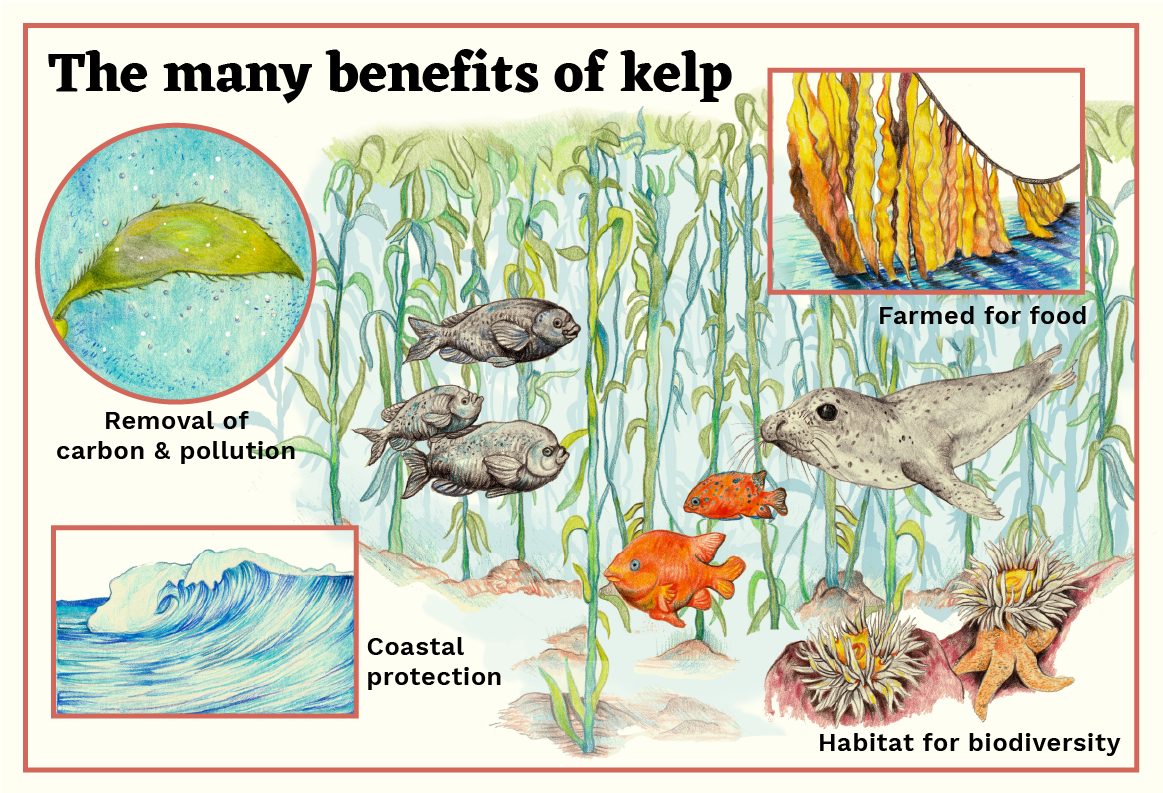
Others are pushing kelp conservation in a new direction, not by restoring seaweed forests but by creating entirely new ones. In China, Jiaping Wu is involved in the development of 150 floating “marine ranches” that span the length of the coast, where multiple species of seaweed – including kelps – are being cultivated without any commercial intent. “The requirement is to restore seaweeds primarily for ecological conservation. The ranches are never harvested,” says Wu. The goal is ultimately to incorporate these carbon-sequestering, biodiversity-supporting life rafts into China’s climate mitigation plan, he explains. “We’re thinking of all kinds of ways to capture carbon.”
Carbon sequestration is, of course, not the only ecosystem service kelp provides. But developing more sophisticated measures of wild kelps’ sequestration potential could be a good way of getting these ecosystems the protections they need, says Filbee-Dexter. Along with colleagues, she’s now developing models to precisely map where kelps end up in the ocean when they break loose, to try and reliably account for the amount of carbon individual kelp forests lock away. “If we don’t account for ecosystem services, then often there’s less of a push to restore and protect, and people care less what happens to these ecosystems,” she says.
Alongside this, there are small but positive signs that kelps are beginning to receive more protection. In Australia, giant kelp forests were granted endangered status in 2012 – a world-first for macroalgae. Earlier this year, US President Joe Biden’s executive order on tackling climate change mentioned the protection and restoration of wild kelp forests as a priority. And now, researchers from the University of Queensland are embarking on a pioneering project to comprehensively map the planet’s kelp, so we know what we have, and where marine protected areas might better safeguard these ecosystems.
“There are very large areas of kelp forests that have no protection, no monitoring, and haven’t even been seen by a human eye. From a global standpoint, we’re far away from any similar knowledge that we have about forests on land,” Filbee-Dexter says. But things are changing. In research circles, there’s an argument that “we should stop calling them ‘kelp beds’,” she says, because it minimises the magnitude of what these ecosystems do in our oceans.
In other words, it’s time to start seeing seaweeds – and their giant mascots, kelps – for what they are: the rainforests of the sea.


